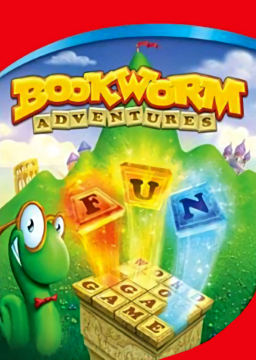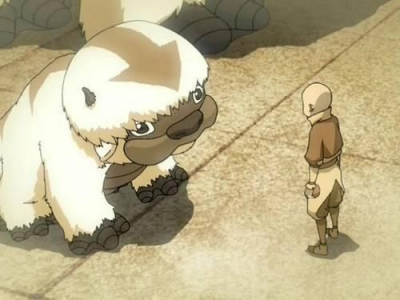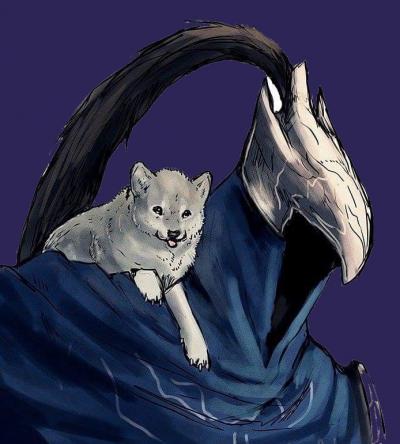Seeing larger, obscure words in Bookworm doesn’t require a massive vocabulary, it requires dedication and practice.
- Basics Each tile has its own value
1 damage A, D, E, G, I, L, N, O, R*, S, T, U
1.25 damage (Tier 2, sapphirable in 8-letter words) B, C, F, H, M, P
1.5 damage V, W, *Y
1.75 damage J, K
2 damage *X, *Z, *R
2.75 or Qu damage Qu
3 damage *X, *Y, *Z
- R is 1 damage without the Wooden Parrot (obtained after 2.5, pirates)
- R is 2 damage with the Wooden Parrot
Y is 1.5 without the Arch or Bow, X and Z are worth 2 without Arch or Bow X, Y and Z are worth 3 with Arch and 2 with Bow
Once you’ve played the game for long enough, you can tell how much damage a word is going to do based on the size and letters of the word. If you’re starting out, just know that X, Y, Z and Qu are the best tiles for inflicting the most amount of damage. Don’t think about the values too much, just understand that all the tiles have different amounts of damage; the less-used the letter is, the more it’ll do.
You can use your numpad to enter words and use potions. ENTER, respectively, enters the word and 1, 2, and 3 are for potion usage. 4 on the numpad also enters words. All the other non-numpad keys work (1, 2, 3, 4 and the non-numpad enter key). Sorry to break it to you, but you cannot type words in.
tip: capitalize a word in its entirety when talking about a word used in-game ex. ENTIRETY Affixes
- Word identification and lengthening To excel in BWA (Bookworm Adventures), having a knowledgeable understanding of the English language makes life a whole lot easier (same thing with the other versions of BWA). You have to know the pluralization techniques, identify affixes, understand how words are pronounced, etymology (origin and history of words and the parts that make up the words) and identifying patterns.
Start out with one run through the game, casually. Recognize words that are spelled regularly. Take that word and try to extend it with other affixes. If the word BUSH is being spelled every time, B, S, H, are showing up, try mixing it up, try adding more to the word. If the U in BUSH was changed to an A, you would have BASH. Simple as that. Once you have one word-- one word with a set of individualized letters (B, S, H), extend it a little more. BUSH can be turned into BRUSH with one R, BUSH can be turned into BLUSH with one L, BUSH can be turned into BUSHY with a Y. BRUSH can be turned into BRUSHING with an -ING, BLUSH can be turned into BLUSHERS with -ERS and BUSHY can be turned into BUSHILY with an I and an L. This can be represented with a simple mini-flowchart.
BUSH -> BUSHY -> BUSHILY BUSH -> BLUSH -> BLUSHERS BUSH -> BRUSH -> BRUSHING -> AIRBRUSHING
Once this is understood, try using different affixes instead of -ING, -ED or -ER like
OUT- (OUTLEARN, OUTHEAR, OUTVAUNT, OUTGOING, OUTPLAY) UN- (UNWASHED, UNWARPED, UNLIKED, UNWOODED) -WAY- (ROUTEWAY, AIRWAY, TRAMWAY, TIDEWAY, SIDEWAY, AWAYNESS, WAYLAY)
Most words in the English language are made up of easy-to-understand interconnectable affixes, but sometimes, they won’t be so simple.
- Correctly using an anagrammer
Anagrammers are really only useful if you are going to dedicate the time in seeing the best or specific word. First, enter the rack in the anagrammer, identify the best or specific word, then study the living hell out of that word. I suggest getting a note card, Post-it note or any, tangible method of plastering that word in your head. If the best word is SILOXANE (a chemical compound used in the cosmetic industry for deodorants, reduction in greasiness, silky-shiny look etc.), take the time to learn and understand it, so maybe that one day, a word that you know inside and out, will just pop up on the Bookworm rack because of how much time your brain is focusing on that one word. The method of looking at the anagrammer, identifying the word and repeatedly saying a word in your head will not work. Your brain will immediately get distracted by the new racks generated. You gotta’ know the word, be the word, love the word, understand the word-- which pretty much means: know the definition, part of speech and its pluralizability. ‘ If a word is too confusing to understand or care for, try anagramming it. For example, the word ROUTEWAY is an anagram of OUTWEARY. NEURALLY is an anagram of UNREALLY. OUTDRAWS is an anagram of OUTWARDS. Even if a word isn’t a full anagram of another word, take little bits and pieces of the word and form different words. The word SILOXANE includes all of the letters needed to spell the word ALEXINS (plasma without its clotting-factors).
Take away families from anagrammers. A family is a group of words with the same or similar affixes: the WAY family, the OUT family, -ORY can even be considered as a family. While looking for powerful W words, I discovered the WAY family, which consists of over 130 words including the affix WAY. AISLEWAY, AIRWAY, ROUTEWAY, GREENWAY etc. The OUT family is one of the most abundant consisting of over 1,800 words with OUT.
Thanks for reading, if you have any questions regarding the mechanics, specifications of tips please ask. First time doing a written guide.




